It’s time to venture once more into the realms of solo gameplay as this week I check out Roll Player, perhaps the best known and most successful release from Thunderworks Games (Cartographers: Heroes). Designed by company owner Keith Matejka with art by JJ Ariosa and Luis Francisco, it’s a game that centers around what might be the best part of tabletop RPG’s: character creation. That’s right, the entire game revolves around the development and rolling up of an RPG character. No adventure, no further story (well, until Adventures hit Kickstarter last year), just a competition to see who can min/max the best character in the group. Pretty cool, right? So even though it’s been out for a few years, I still jumped at the chance to check the game out and especially see how it flowed when played all by your lonesome (something we’ve gotten used to as this pandemic continues to chug along).
What’s In The Box?
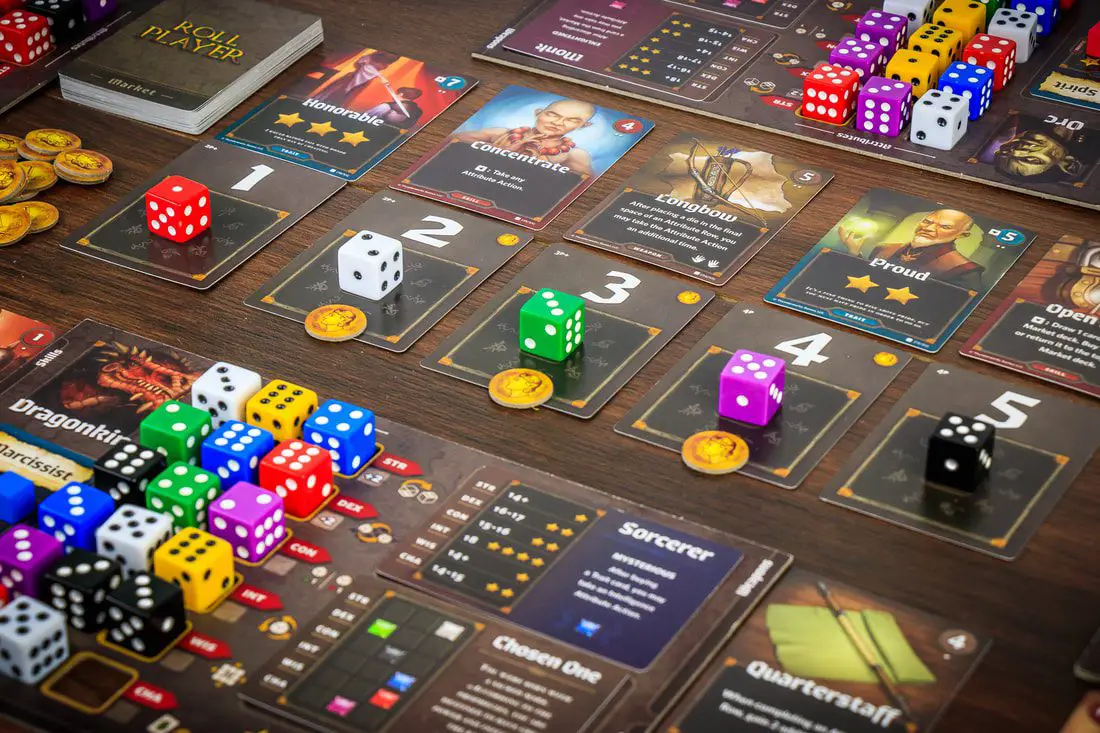
- 1 Rulebook
- 6 Character Sheets
- 73 Dice
- 10 Green
- 10 Blue
- 10 Red
- 10 Purple
- 10 Black
- 10 White
- 13 Gold
- 1 Dice Bag
- 101 Cards
- 4 Player Aid / Reputation Track Cards
- 6 Class Cards
- 16 Backstory Cards
- 17 Alignment Cards
- 53 Market Cards
- 5 Initiative Cards
- 55 Gold Tokens
- 12 Tracking Tokens (2 in each Class Color
- 6 Charisma Tokens
Thunderworks always does a good job with their games, and even for something as minimalist as Roll Player it’s well made. The player boards are especially nice, well laid out and with obvious spots for everything to go. The play area is incredibly well defined and organized thanks to this. The art is great for being fairly generic high fantasy, though there’s plenty of character (heh) to be seen in some of the cards. Most of the flavor text is in an italic script and a bit hard to read, though that’s certainly not an impediment to gameplay.
How’s It Play?
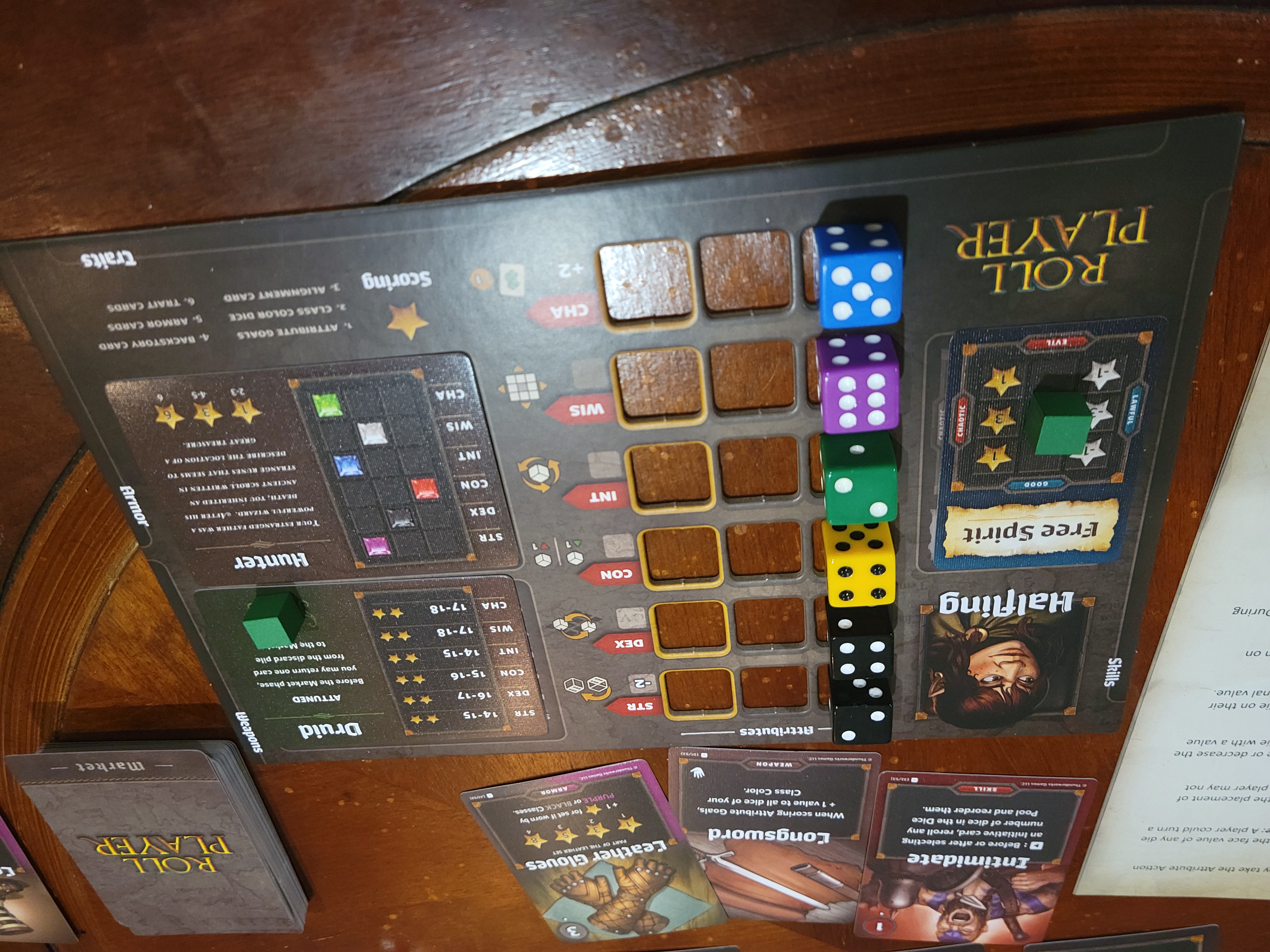
Roll Player follows a pretty easy cycle as you work to fill up your character sheet. The main component of game play is dice, a bag of d6’s rolled each round that get allocated to your ability scores to hopefully get the best number possible (what number and how specific you have to be depends on your class). It’s a nice nod to the traditional d6 method of rolling stats for D&D, and there’s enough mechanics to change the dice that the RNG never feels oppressive.
You start with a race board and then get a class (pick one of two based on the color of drawn dice), a backstory (which adds goals for your dice placement), and an alignment, which is a set parameter for you to meet on the alignment spectrum in order to gain or, at the very least not lose, victory points at the end. Like in a real RPG, these elements combine to create distinct and interesting characters. They also add plenty of almost side-puzzles to complicate gameplay enough without making things too dense.
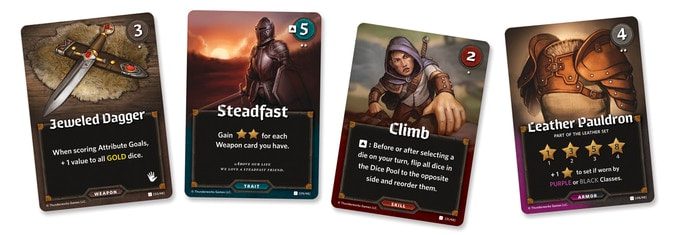
While you allocate dice, you’ll also be working to flesh out your character with skills, traits, and items from the market. Traits are sort of like goal cards, things you can aim for in your build that reward you at the end of the game if met. Skills are powers that can be activated once per turn to affect different aspects of the game. Both cost not just gold, but affect your alignment as well. If you’re trying to get and keep a certain sweet spot on your alignment, you’ve got to be smart with these.
Weapons give you extra abilities or change certain rules, while armor comes in sets that when completed give a big boon of victory points. You especially want to look for armor that synergies with your character, since you probably don’t want to stick your wizard in full plate.
In a solo game, things run basically as they would in a two-player iteration of the game. The only big difference is the “enemy” die that gets rolled when you pick your dice from the initiative cards. Depending on what you take, the dice might get rolled and end up trashing part of the market. As solo mechanics go, it’s not that oppressive. It doesn’t make the game unplayable, nor does it feel like there’s a proper mechanism working to stop you. It’s just enough to make the solo-puzzling feel a bit more interesting than just relying purely on luck.
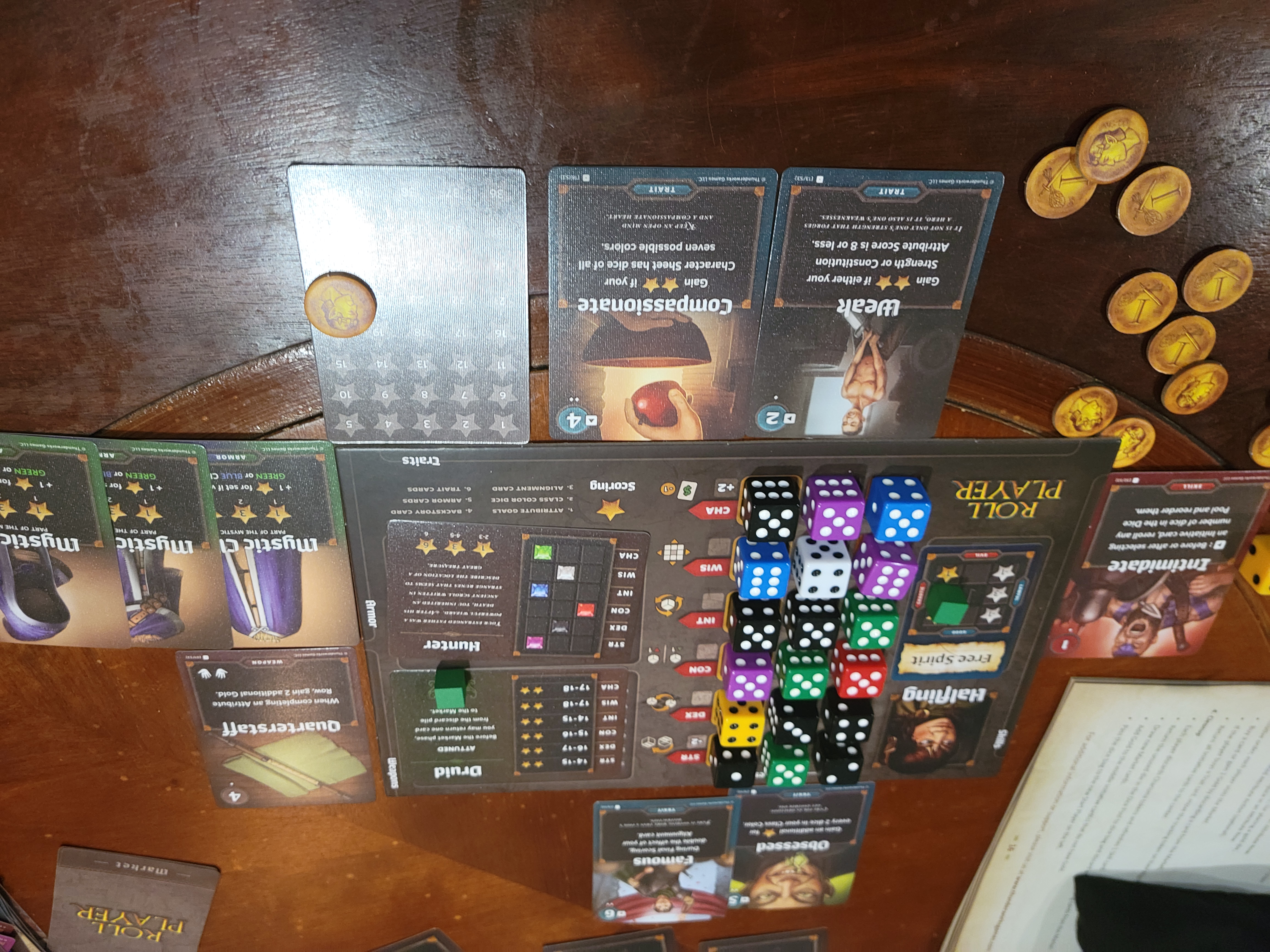
The Verdict?
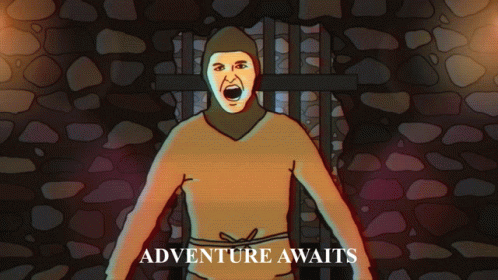
Obviously, I hope you go check out reviews of this game that cover the multiplayer aspect since I think that’s the obvious strong point of this game. I’m personally really looking forward to getting this to a group play soon. Solo gameplay feels more like an afterthought here, something that works with the pre-existing rules without getting too crazy. But it’s a great way to get a feel for the game, and thanks to the easy set up and play it’s still a good game to have out just to kill time while you’re watching TV or need to kill some time. I could even see it working well as a way to generate characters for a D&D or Pathfinder campaign.
You can grab Roll Player from the Thunderworks Games store, Amazon, or your FLGS!
Images and Review copy provided by Thunderworks Games
Have strong thoughts about this piece you need to share? Or maybe there’s something else on your mind you’re wanting to talk about with fellow Fandomentals? Head on over to our Community server to join in the conversation!

